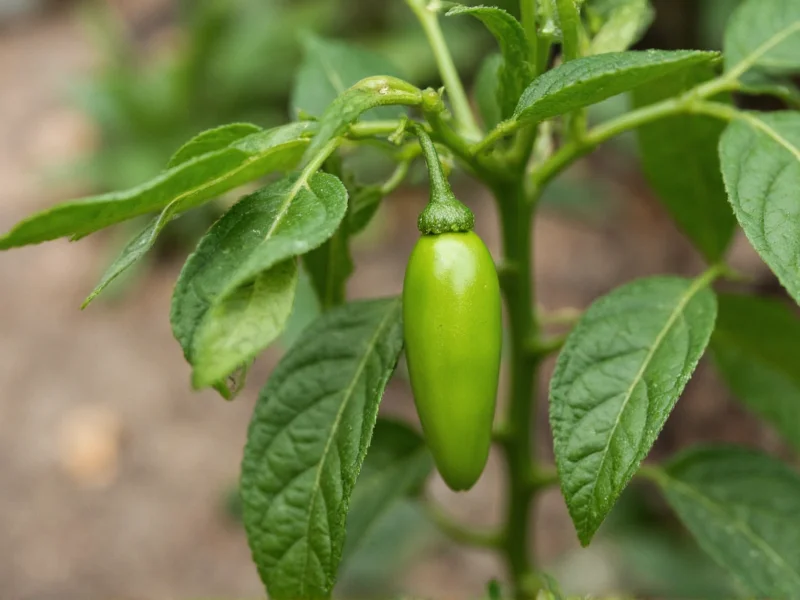Dry jalapenos represent a versatile preservation method that transforms fresh peppers into a pantry staple with extended shelf life and intensified flavor. Unlike their fresh counterparts which last only 1-2 weeks refrigerated, properly stored dried jalapeños maintain quality for 1-2 years while developing nuanced flavor characteristics through the dehydration process.
Understanding Dry Jalapeno Characteristics
The drying process fundamentally alters jalapeño peppers' chemical composition. As moisture evaporates, capsaicinoids concentrate while natural sugars caramelize, creating a flavor profile that's simultaneously fruitier and smokier than fresh peppers. This transformation makes dry jalapenos particularly valuable in dishes requiring deep, complex heat rather than the bright, grassy notes of fresh varieties.
| Characteristic | Fresh Jalapeño | Dry Jalapeño |
|---|---|---|
| Shelf Life | 7-14 days refrigerated | 12-24 months stored properly |
| Heat Level (Scoville) | 2,500-8,000 SHU | 3,000-9,500 SHU (concentrated) |
| Primary Flavor Notes | Grassy, vegetal, bright | Smoky, earthy, complex |
| Moisture Content | 90% water | 10-15% water |
Optimal Storage Techniques for Maximum Freshness
Proper storage determines how long your dry jalapenos maintain peak quality. Store them in airtight glass containers away from light and heat sources. For extended preservation beyond six months, include food-safe oxygen absorbers to prevent moisture absorption. Many chefs recommend storing dried peppers with a whole clove of garlic, which helps maintain flavor integrity while deterring pantry pests through its natural antimicrobial properties.
Contrary to common practice, refrigeration generally harms dried peppers by introducing moisture during temperature fluctuations. Instead, maintain a consistent storage temperature below 70°F (21°C) with humidity under 60%. When stored correctly, dry jalapenos develop increasingly complex flavor profiles over the first 3-6 months before gradually mellowing.
Culinary Applications and Flavor Pairing
Dry jalapenos shine in applications where sustained heat and deep flavor matter more than fresh pepper brightness. Their concentrated nature makes them ideal for:
- Slow-cooked dishes like chili and stews where flavors meld over time
- Rubbed directly on meats before grilling for smoky heat infusion
- Creating homemade hot sauces with layered complexity
- Infusing oils for controlled heat distribution in cooking
- Adding to dry spice blends for consistent heat measurement
Professional chefs often combine dry jalapenos with complementary ingredients like smoked paprika, cumin, and oregano to create balanced heat profiles. For Mexican cuisine applications, pairing dry jalapenos with epazote enhances traditional flavor authenticity while mitigating potential bitterness from over-drying.
Rehydration Methods for Different Culinary Needs
The rehydration process significantly impacts how dry jalapenos perform in recipes. For sauces and purees, steep peppers in hot (not boiling) liquid for 15-20 minutes to preserve volatile flavor compounds. When incorporating into soups or stews, add dry jalapenos directly to the cooking liquid 30-45 minutes before completion for gradual flavor release.
For applications requiring texture retention like salsas or salads, use a cold rehydration method: submerge peppers in room temperature liquid for 2-3 hours. This preserves structural integrity while allowing controlled flavor infusion. Always reserve the rehydration liquid—it contains valuable flavor compounds that enhance overall dish complexity.
Creating Dry Jalapenos at Home
Home drying produces superior quality compared to commercial products when done correctly. Select fully ripe (red) jalapeños with smooth skin and no blemishes. For optimal results, follow this professional-grade method:
- Wash and thoroughly dry peppers without puncturing skin
- Slice lengthwise to expose maximum surface area while maintaining structural integrity
- Arrange on dehydrator trays with 1/2 inch spacing for air circulation
- Dry at 135°F (57°C) for 8-12 hours until brittle but not crumbling
- Condition for 7 days in airtight containers with periodic shaking
Alternative oven drying requires careful monitoring at the lowest possible temperature (140°F/60°C) with the door slightly ajar. Check every 30 minutes to prevent scorching. Sun drying works in arid climates but requires protection from insects and moisture fluctuations.
Common Mistakes to Avoid with Dry Jalapenos
Many home cooks encounter issues with dry jalapenos due to improper handling. The most frequent errors include:
- Over-grinding into powder before needed (reduces shelf life)
- Storing near strong-smelling foods (dried peppers readily absorb odors)
- Using excessive quantities without accounting for concentrated heat
- Rehydrating in boiling liquid (causes bitterness)
- Mixing different drying batches (creates inconsistent heat levels)
When substituting dry jalapenos for fresh in recipes, use a 3:1 ratio by volume. Remember that dried peppers' heat distribution differs significantly from fresh—their capsaicin disperses more evenly throughout dishes rather than concentrating in seeds and membranes.
Flavor Development Over Time
Dry jalapenos undergo subtle flavor evolution during storage. Within the first month, they develop pronounced smokiness as residual enzymatic activity continues. Between 2-6 months, complex fruit notes emerge as Maillard reactions progress. Beyond 9 months, heat gradually mellows while earthy characteristics intensify.
For immediate use, select recently dried peppers (1-2 months old). For complex flavor applications like mole sauces, choose peppers aged 4-6 months. Reserve older batches (9+ months) for dishes where milder heat with pronounced earthiness is desirable, such as bean dishes or certain rice preparations.











 浙公网安备
33010002000092号
浙公网安备
33010002000092号 浙B2-20120091-4
浙B2-20120091-4